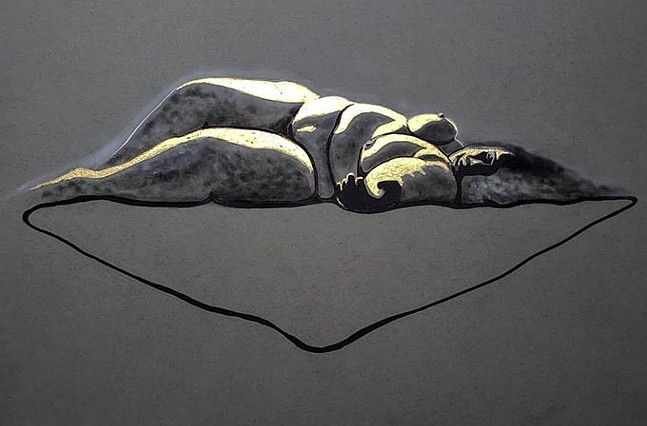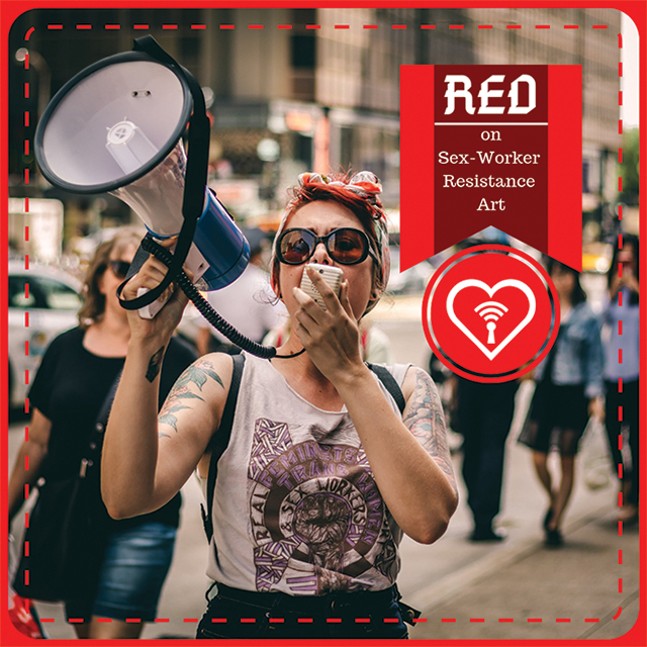
If you were paying attention to social media in 2018, you may have noticed that major platforms such as Tumblr, Facebook, Instagram, and Patreon severely restricted, or altogether banned, adult content and nudity. This type of censorship has real and serious consequences to many marginalized communities. To consider why it’s important for adults to be able to discuss their bodies and their sexualities in public forums, I interviewed Ashley Ramos, a Pittsburgh-based body-positive figurative artist who uses her oil-based painting to represent the sensuality of larger bodies.
Interview edited for length and clarity.
Several social media sites have recently tightened restrictions on adult content. How do you feel about that?
When I was struggling several years ago, being able to see bodies that looked like mine stopped me from killing myself. Seeing larger [naked] bodies that were confident in themselves gave me a blueprint [on how] to be myself, to be sexual. As a result, my mental health (and body image) is a lot better.
So, before you were ever posting as an artist, the freedom to share this sort of content was important to you?
Seeing diverse representations of bodies and sexuality helps people connect and not feel so alone. Artists are using the platforms to explore different ways of representing themselves and of having sex. I remember making art about sex even before I ever had sex.
Tumblr was one of the first places that I was able to express myself sexually, and to have important conversations.
What was it like starting to posting your own work online?
Posting my own work felt like a coming-out, where I was able to be unashamed about my art. As a young person, I made very sexual art that my mother severely punished me for. But moving into a space where I could publicly post my work allowed my mother to really understand me. The public displays of my art was a gift to her because she got to see it through the eyes of others. She saw that what I was communicating was my own worth, and that this was more about body positivity than it was about hedonism.
How have folks responded to your work that might have changed her perception?
There is a particular piece I did where a woman is bending over and holding her breasts. I called it “Burden.” A doctor who I’m friends with on Facebook reached out to me and told me that she has large breasts and she has had patients who have cried in her office because of the pain associated with them. Yet, not many people talk about that because large breasts are very eroticized objects for others. My art opened up this conversation for many folks. More generally, people would have conversations with me about body positivity and my body journey. Representing my own body in my art was powerful. In my art I was saying, “This is a body, and I am going to show it, you can either accept it or you don’t have to.” Just existing is such a political statement, I don’t need to say anything further.
On Episode 38 of the Peepshow Podcast we interview Red, a New York City-based Marxist/feminist community organizer and underemployed, sex-working art historian. They are a member of the Suppose Ho(s)e Collective, Survived & Punished New York, and they coordinate the Justice for Alisia Walker Defense Campaign. Red’s organizing efforts sit at the intersection of art, politics, and labor.
In addition to a discussion of the prison industrial complex as it relates to sex work politics, we talked to Red about the work they have done curating the art exhibit Whores Will Rise. The exhibit was a collection of resistance ephemera from sex work protest rallies and marches.
Red talks about the importance of saving and archiving these resistance objects, saying, “They are objects, but they are also talismans of resistance, and proof that we [as sex workers] were here.” They go on to say, “there is something really special about putting someone’s protest poster on a wall and insisting unapologetically that it is an art object, that it is worthy of your attention, of your reverence, of your participation with it.”
For more on Red’s work, and on resistance art, listen here:


